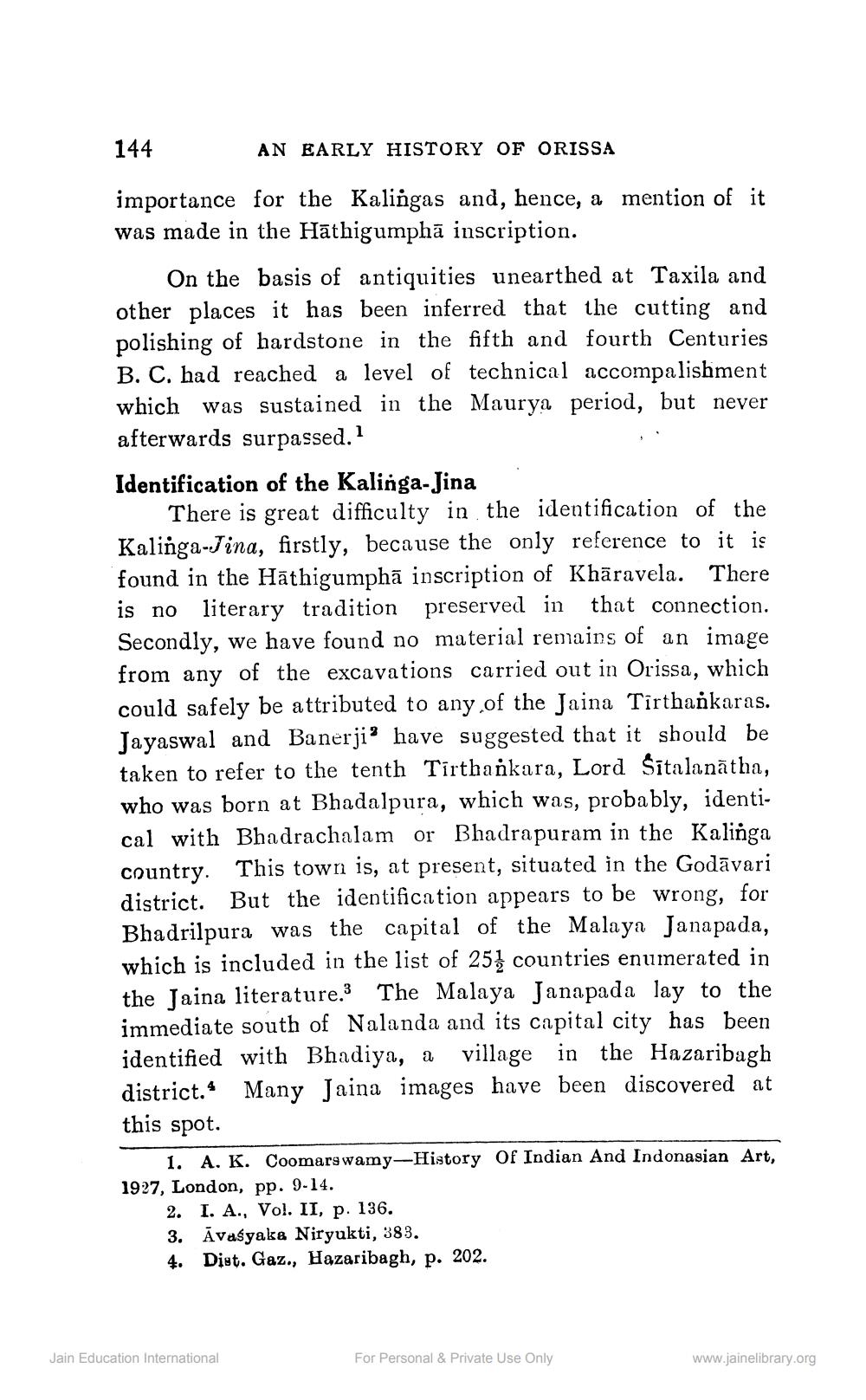________________
144
AN EARLY HISTORY OF ORISSA
importance for the Kalingas and, hence, a mention of it was made in the Hāthigumphā inscription.
On the basis of antiquities unearthed at Taxila and other places it has been inferred that the cutting and polishing of hardstone in the fifth and fourth Centuries B. C. had reached a level of technical accompalishment which was sustained in the Maurya period, but never afterwards surpassed. 1 Identification of the Kalinga- Jina
There is great difficulty in the identification of the Kalinga-Jina, firstly, because the only reference to it is found in the Hāthigumphā inscription of Khāravela. There is no literary tradition preserved in that connection. Secondly, we have found no material remains of an image from any of the excavations carried out in Orissa, which could safely be attributed to any of the Jaina Tirthankaras. Jayaswal and Banerji' have suggested that it should be taken to refer to the tenth Tirthankara, Lord Sitalanātha, who was born at Bhadalpura, which was, probably, identical with Bhadrachalam or Bhadrapuram in the Kalinga country. This town is, at present, situated in the Godāvari district. But the identification appears to be wrong, for Bhadrilpura was the capital of the Malaya Janapada, which is included in the list of 25} countries enumerated in the Jaina literature. The Malaya Janapada lay to the immediate south of Nalanda and its capital city has been identified with Bhadiya, a village in the Hazaribagh district.* Many Jaina images have been discovered at this spot.
1. A. K. Coomarswamy-History Of Indian And Indonasian Art, 1927, London, pp. 9-14.
2. I. A., Vol. II, p. 136. 3. Āvaśyaka Niryukti, 383. 4. Dist. Gaz., Hazaribagh, p. 202.
Jain Education International
For Personal & Private Use Only
www.jainelibrary.org




